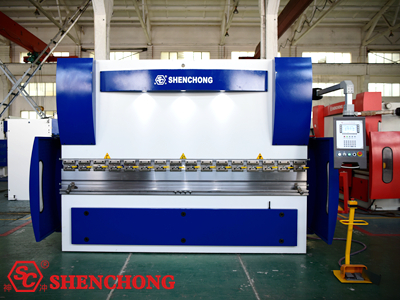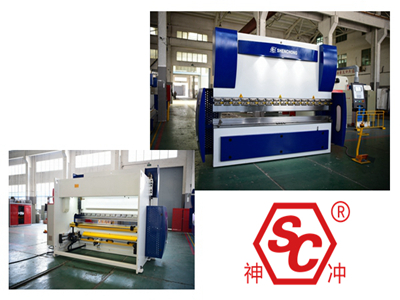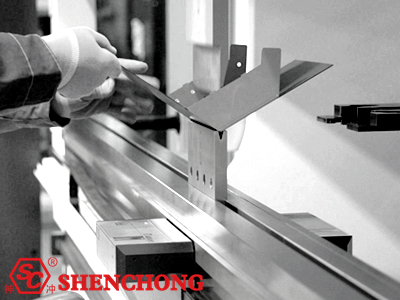
The two sides of the hydraulic metal brake are unbalanced. This is a big problem encountered by operators. How to solve this problem?

There are uneven pressure on the CNC bending machine. First of all, we need to find out the cause of the problem. Only when we find the problem can we prescribe the right medicine. Specifically, there are two main reasons for the uneven pressure on both sides of the bending machine. One may be the cause of the press brake bending machine itself. , and the other is an external cause.
First of all, if it is an external reason, for example, there is a heavy object near the press brake bending machine that affects the uneven force on the sliders on both sides of the working cylinder. At this time, we only need to remove the heavy object and let the two working cylinder sliders of the press brake bending machine again Returning to normal movement will resolve the issue.
It should be noted that some users often do not pay attention to the cleaning and maintenance of the metal press brake when using the machine, which is wrong. Before using the hydraulic sheet metal brake, we need to ensure that there are no foreign objects in the body of the bending machine, and always pay attention to the working condition of the bending machine, which can effectively reduce the uneven pressure on both sides of the bending machine.
The static position of the press brake bending machine is that the upper bending beam is at the upper dead center. To prevent uncontrollable movement, the system closes the hydraulic positive cylinder rod cavity with a non-spill back pressure valve.

The working cycle of the hydraulic metal brake press has three stages: rapid descent, slow pressurization (bending), and rapid return. The conversion of each stage is controlled by a three-position four-way electro-hydraulic directional valve. When the electro-hydraulic reversing valve works in the left position, it realizes quick return stroke. The unloading of the hydraulic pump is realized when working in the middle position, and the rapid and common progress of the hydraulic pump is realized when working in the right position.
The speed change is controlled by the pressure-limiting variable vane pump and the flow control is controlled by the travel switch. When the bending machine descends rapidly, it is required to be faster to reduce the empty travel time, and the hydraulic pump adopts full pressure oil supply.
The piston movement stroke is controlled by a stroke valve. When the piston moves to a certain position at a constant speed, the stroke valve receives the signal and generates an action to realize the conversion from fast forward to work forward. When the piston moves to the end stage, the pressure relay receives a signal to make the electro-hydraulic directional valve change direction.
Due to the relatively high pressure of the bending machine, the pressure in the oil inlet chamber is relatively high at this time, so a pre-pressure relief circuit is required during the stage from work to fast return, so as to prevent the hydraulic components from being impacted by high pressure and unload the oil circuit. smooth.
A pre-pressure unloading circuit can be designed on the fast return oil circuit, and the unloading speed of the circuit is adjusted by a throttle valve, and the reversing valve is in the middle position at this time. When the pressure is relieved to a certain pressure, the reversing valve is switched to the left position to realize smooth unloading.
In order to monitor the pressure of the oil circuit, the CNC hydraulic metal brake is equipped with a pressure gauge and a relief valve at the outlet of the hydraulic pump, which also acts as an overload protection for the system. Because the slider is affected by its own gravity, the slider will produce a downward movement, so a one-way sequence valve should be designed as a balance valve in the oil circuit to form a balance circuit, which will generate a certain amount of back pressure and also make the working process stable.
A one-way valve is designed at the oil outlet of the hydraulic pressure pump, which can be used as a preset pressure valve, and can also provide starting pressure for the reversing of the electro-hydraulic directional valve, and can prevent the impact of the oil pressure on the hydraulic pump. play a protective role.
The fast closing movement of ordinary hydraulic metal brake press machines mostly adopts the form of free landing, that is, the self-weight movement of press brake bending machine beams and accessories. The rodless chamber of the hydraulic cylinder is supplemented with oil through the filling valve, and the rod chamber will generate back pressure at this time. Fast forward speed up to 250Mm/s, controlled by proportional directional valve open-loop or closed-loop. After a short period of braking, the fast forward starts from the top dead center, and the maximum distance is 6M. Different bending machines require different fast forward end positions.
The stamping and bending stage starts from the construction pressure of the rodless cavity. On the one hand, the punching speed is limited by the oil supply of the oil pump, on the other hand, it can be adjusted by the proportional valve and the directional valve.

At the same time, the directional valve also controls the synchronous operation of the bending beam and the positioning of the bottom dead center. Stamping is limited by a proportional relief valve limiting the pump pressure. The CNC provides the corresponding speed, synchronization, positioning and pressure.
The decompression of the rodless chamber starts either from the next dead point or after a short holding time, so that the deformed material flows within a certain period of time, thereby further improving the dimensional accuracy of the parts.
The proportional directional valve indicated by the numerical control completes pressure maintaining and decompression. In order to avoid an unloading shock of the entire system, the decompression time must be as short as possible. In short, the decompression curve is not allowed to be too steep and requires stability. Optimization of the entire process is achieved through proportional directional valves.
In most cases, the flow rate of the pump and the accumulation of pressure in the rod chamber of the sheet metal brake hydraulic cylinder determine the maximum return speed, which is close to the fast speed. The return stroke starts at city pressure in the rod chamber and ends at dead center. The return trip needs to run synchronously.
You may also want to know: